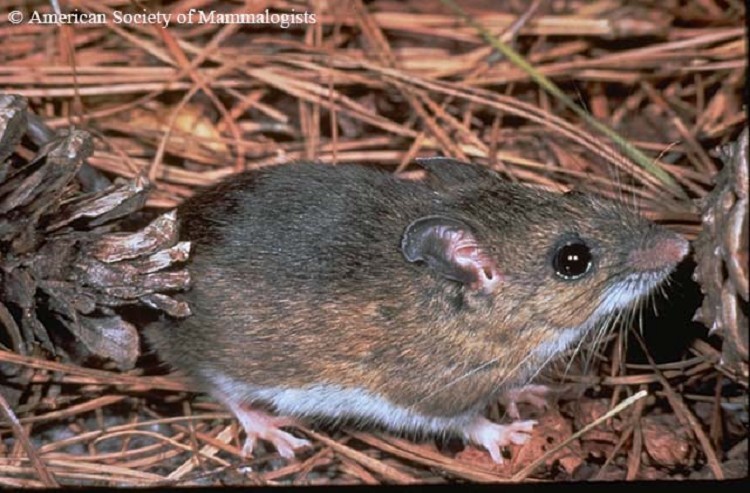Cotton Deer Mouse, Peromyscus gossypinus
The Cotton Deermouse is a rodent which is the largest of the Peromyscus species in Tennessee, occurs all across the state.
Description:
A small rodent with large, black eyes, large ears, and long, coarse whiskers. Color usually ranges from grayish to reddish-brown above, often with a darker band down the center of the back. The feet, lower part of the face, and the undersides are white, which sharply contrasts from upper color. Sparsely furred tails have a darker upper half and lighter lower half, but do not have a sharp contrast between the two surfaces. Tails are slightly less than one-half the total length of the body and lack a tuft of hairs at the tip.
Length: 6.4 - 8.3 inches
Tail: 2.8 - 4.0 inches
Ears: 0.7 inches
Weight: 0.75 - 1.6 ounces
Similar Species:
Cotton Deermouse cannot reliably be separated from White-footed Deermouse and North American Deermouse without detailed analysis of skull and dental formations, and possibly an expert.
Habitat:
Typical habitat is moist, timbered river bottoms or swamps. Also found in caves and cliff crevices.
Diet:
Majority of their food is animal matter (beetles, larvae, etc), but they also eat seeds, nuts, fruits, and domestic grains when available.
Breeding information:
Breeding activity is most active from fall through spring. Some females may have up to 3-4 litters per year. Gestation usually lasts 23 days, but may be longer in females nursing young. Litter sizes can range from 1-7 young (average 3-4). As with the other Peromyscus species, the young are naked and blind at birth. The young are weaned at 20-25 days old.
Status in Tennessee:
No conservation concerns as this mouse is common in moist wooded areas.
Fun Facts:
•A Cotton Deermouse tends to run more than leap.
